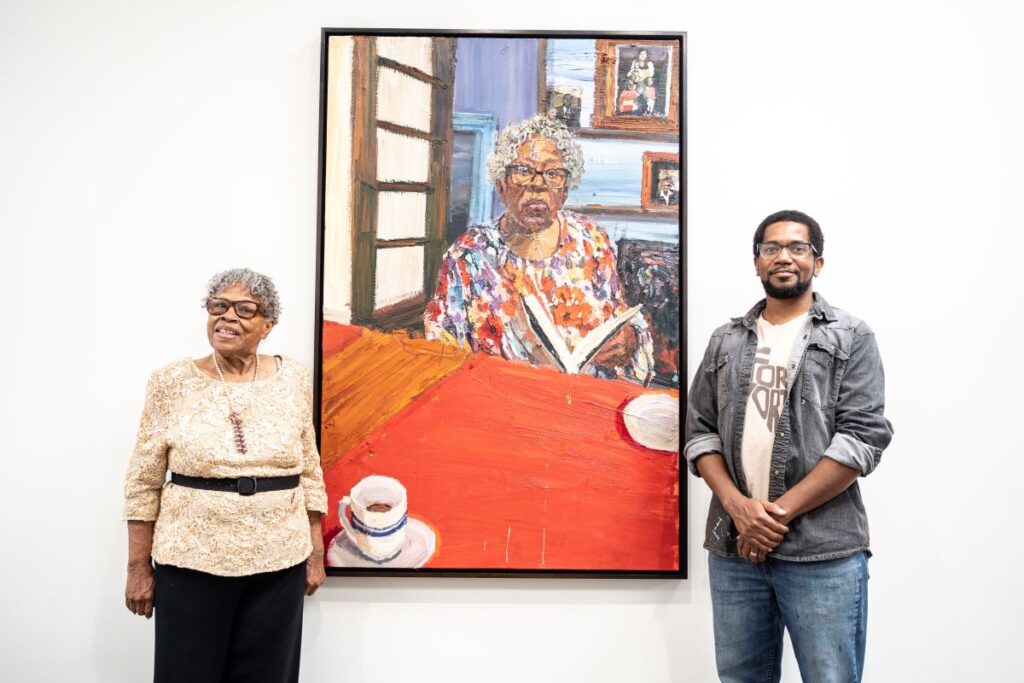
Photo credit: Natasha Johnson
Fulbrighter Sedrick Huckaby has a unique connection to fellow Fort Worth native Opal Lee, an educator, writer, and advocate known as the “Grandmother of Juneteenth.” Having known her since childhood, Huckaby has been a staunch supporter of her decades-long campaign to recognize Juneteenth as a national holiday.
On June 17, 2021, Lee’s efforts came to fruition when June 19 was declared a federal holiday. Witnessing the Juneteenth commemoration signed into law was the realization of a dream for the 97 year-old Lee.
Huckaby became the first artist to paint a live portrait of Lee, entitled “Portrait of an Author, Dr. Opal Lee.” During Lee’s visit to the University of Texas Arlington, where Huckaby was teaching art and art history, he presented her with the painting.
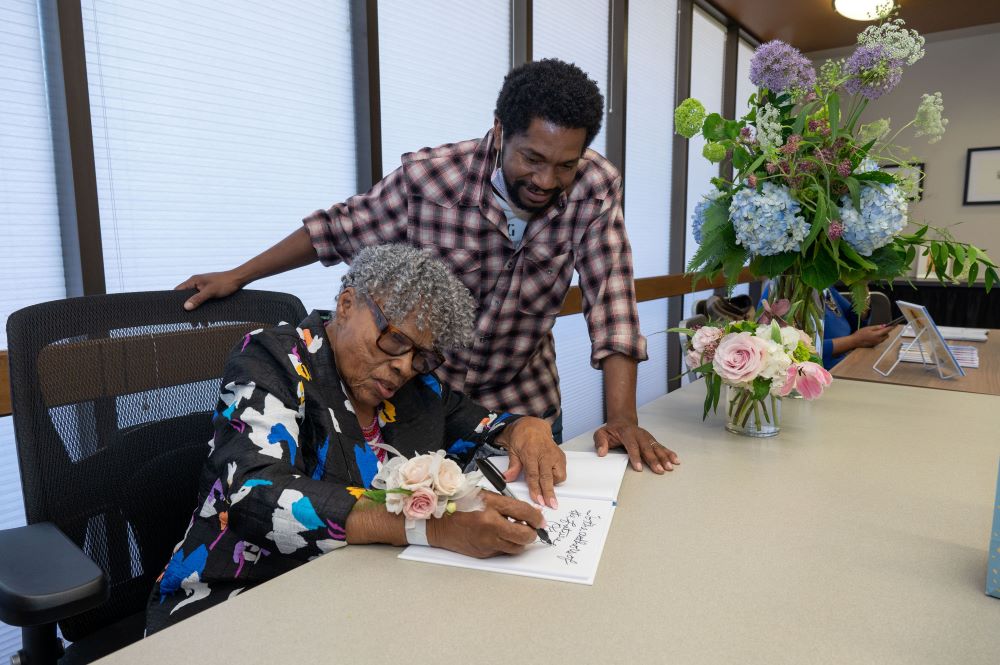
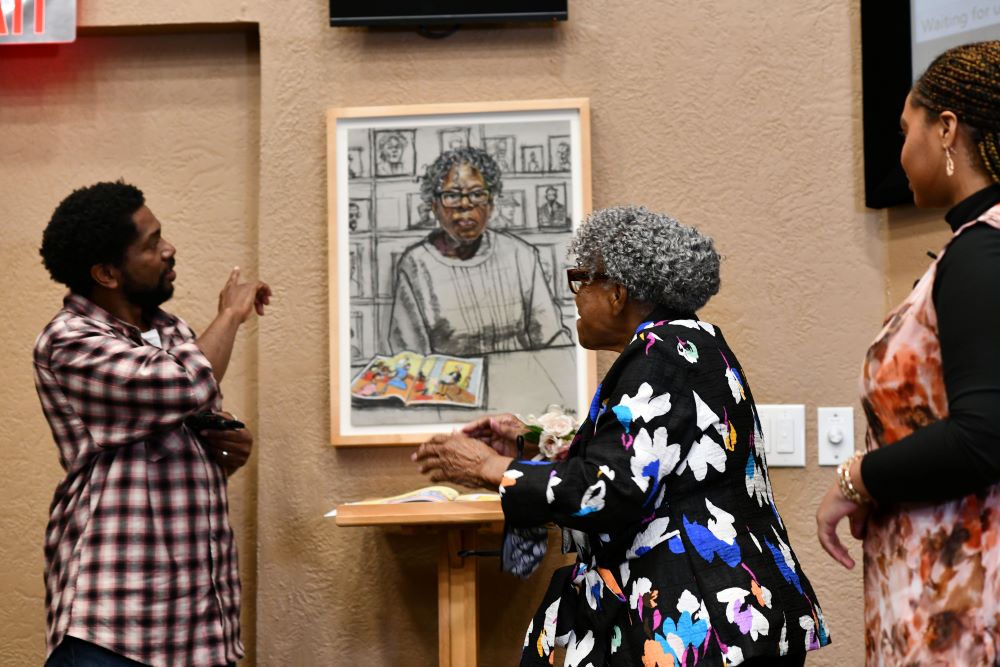
In 2022, Lee was nominated for the Nobel Prize, and in May, 2024 she was awarded a Presidential Medal of Freedom. That same year, a more formal portrait Huckaby painted of Lee was acquired by the National Portrait Gallery in Washington, D.C., and the two held a hosted a discussion about the importance of Juneteenth, their roles as community leaders, and their respective visions.
Huckaby says that it is an “honor to have my portrait of a national hero, an individual I have come to know personally, become a permanent part of this exceptional institution.” He is proud that the painting joins a storied collection that features portraits of people who have had significant impacts on U.S. national identity and culture, including paintings of every president since the country’s founding, and portraits by some of the best artists in American history.
Huckaby, who holds a BFA from Boston University and an MFA from Yale University, received a Fulbright U.S. Scholar Award to Mexico to explore the concept of freedom through the lens of Juneteenth. His project took him to the town of Nacimiento in the state of Coahuila in northern Mexico in 2023 to make portraits of Mascogos community members. These individuals, descended from Afro-Seminoles in the United States, settled in Mexico to escape enslavement in the 19th century and have celebrated Juneteenth as “Dia de Los Negros” since the 1870s. By working with the Mexican government to combat slavery, which was illegal in Mexico, the Mascogos earned the land that became the village of Nacimiento.
The end of slavery in the United States meant that the Mascogos could celebrate the freedom of their relations still living in the United States as well. Huckaby observes that Juneteenth for them meant a new beginning. “Consequently,” Huckaby says, “Juneteenth is kind of like the birthday of Nacimiento, which means birth place. It’s the celebration of their new freedom and homestead that was bought with blood, sweat and tears.”
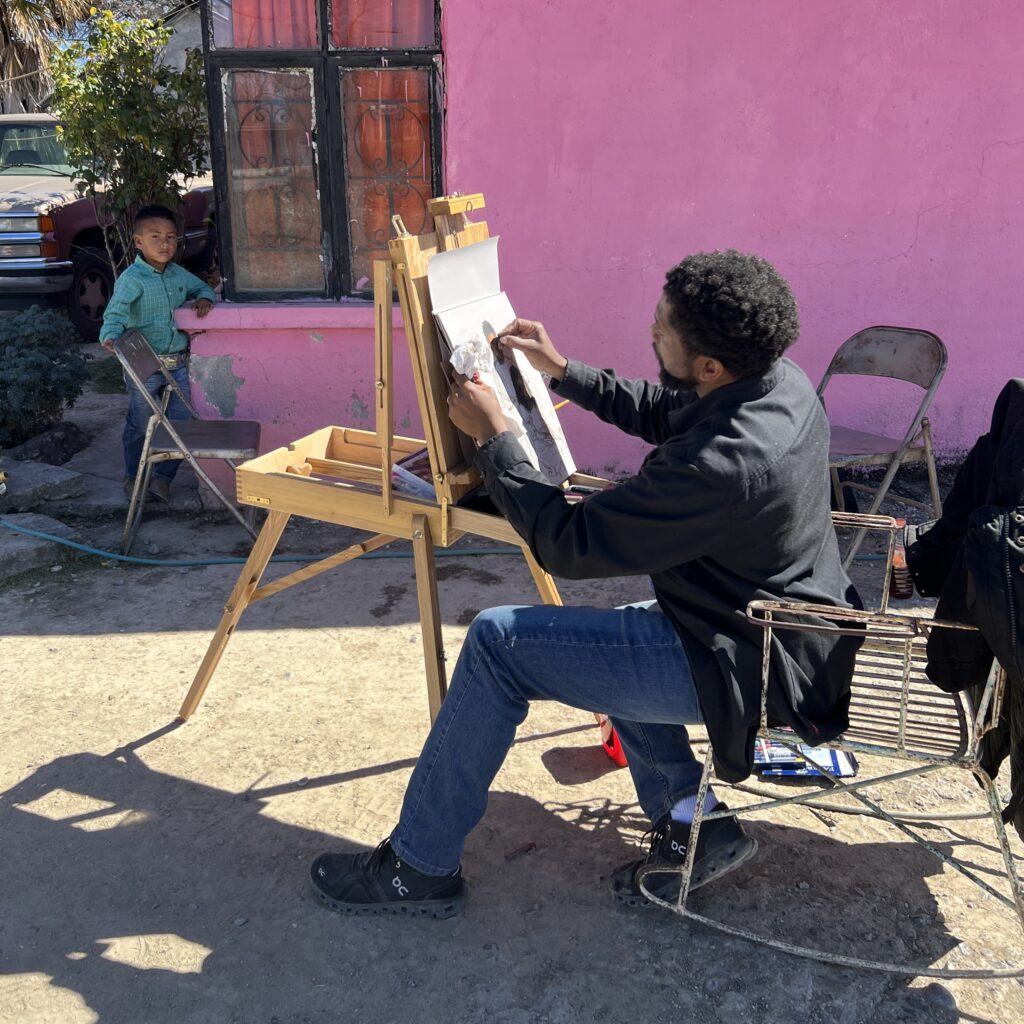
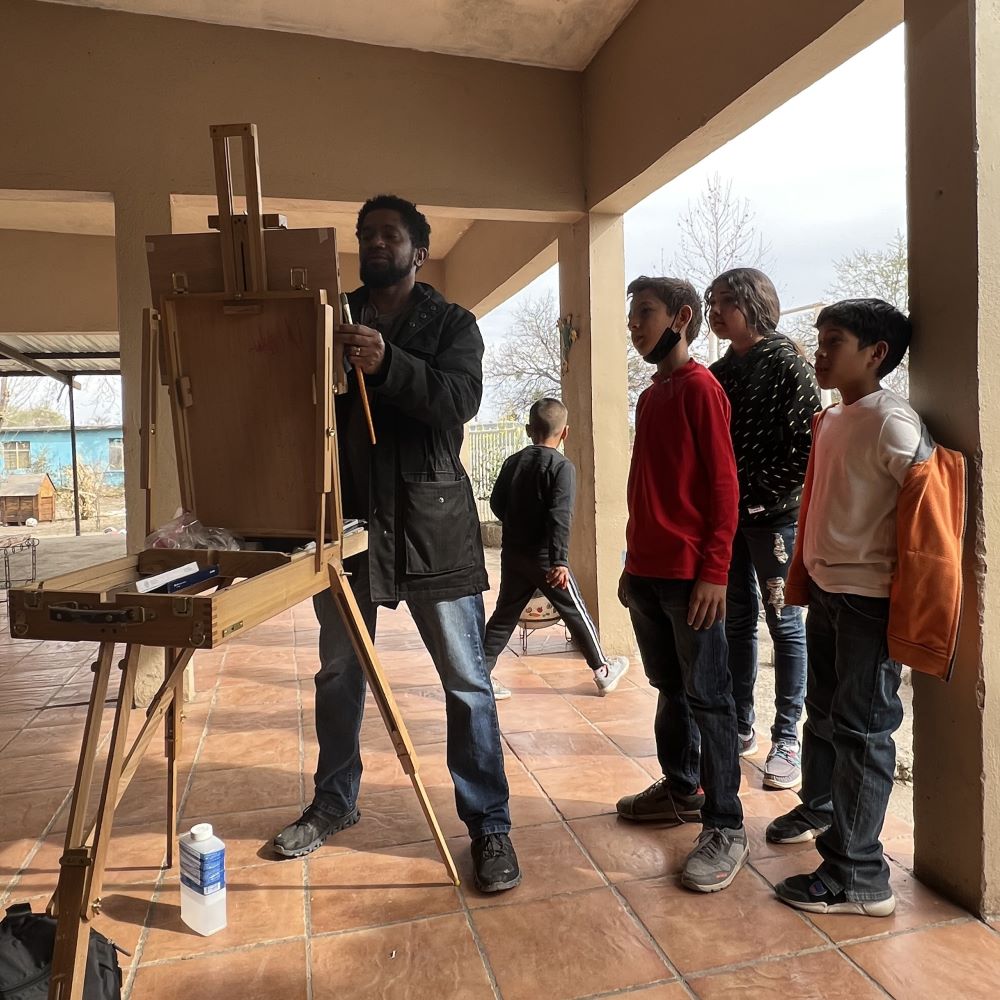
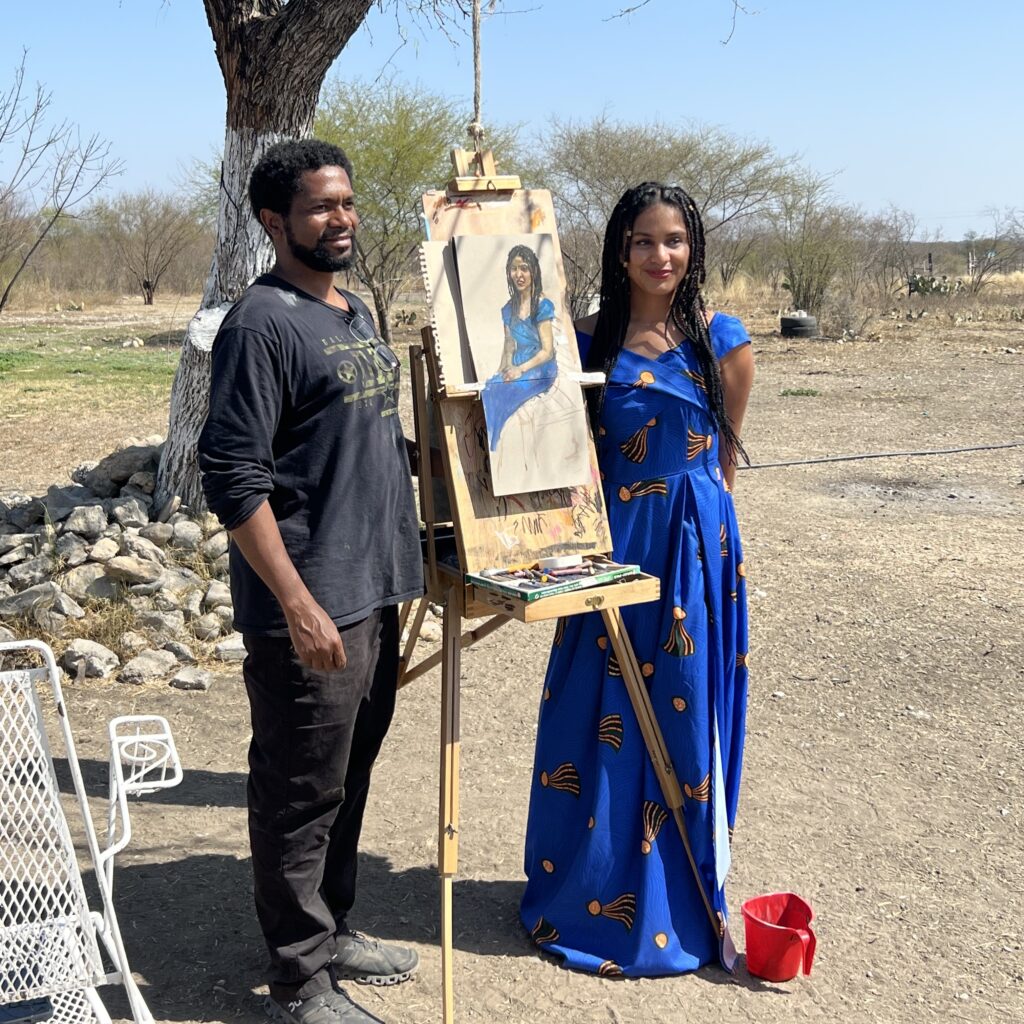
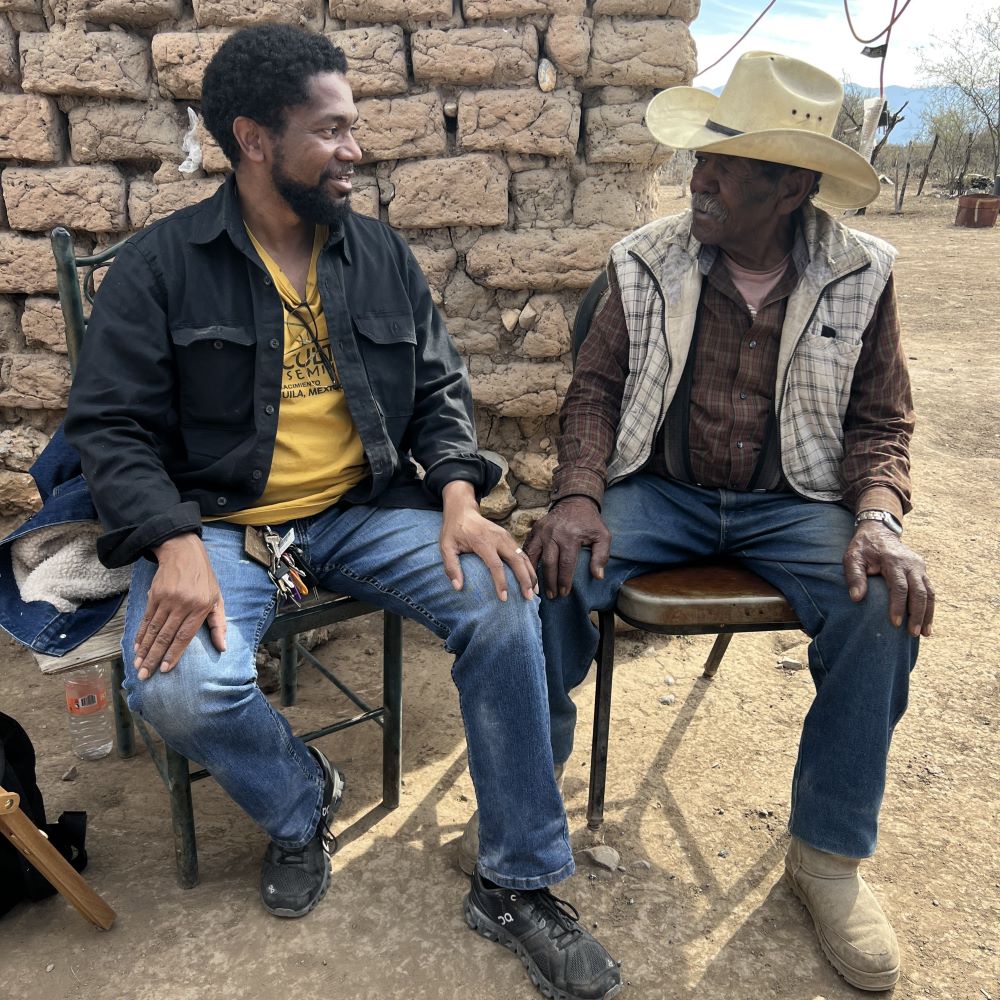
During his Fulbright year, Huckaby made portraits of and collected statements from a wide variety of Mascogos, “from the oldest member to the youngest one,” producing over 100 pastels. He also interviewed and painted “business owners, farmers, the cultural leader, a pastor, and even the newly elected community leader. Having returned to the United States, he plans to use the Nacimiento pastels as studies for a group of portraits that will incorporate information from the oral narratives, continuing his connection with the Mascogos community.
“I cannot express how transformative this project has been for me personally,” says Huckaby. “This project helps me to build bridges and create a wider historical narrative. These projects not only highlight the beautiful story of freedom that Black Americans share with Afro-Mexicans, they also promote cultural growth and positive change.”